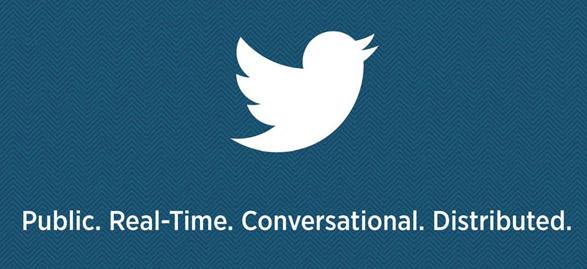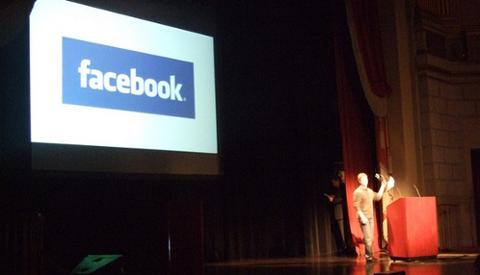 Twitter is well on its way to becoming a publicly traded company, but its new filing with the Securities and Exchange Commission contains information that could make some cautious investors hesitate. According to Twitter’s Form S-1, the company seeks to raise $1 billion with its IPO. That might seem rather low at first glance, given Twitter’s popularity, but the company faces a number of significant challenges in the years ahead. While the messaging service boasts a gargantuan audience, with more than 200 million monthly active users shooting off a combined 500 million Tweets per day, it’s losing money at a steady clip: its revenues for the first six months of 2013 totaled $253.6 million—a 107 percent increase from the same period in 2012—but its net losses also rose by 41 percent to $69.3 million. And while Twitter has figured out how to effectively leverage mobile-device advertising—a business area that once gave Facebook quite a bit of trouble—it faces a possible slowdown in its rate of new users. In December 2012, the company announced (via Tweet, of course) that there were 200 million monthly active Twitter users; six months later (according to the Form S-1) that number had barely increased to 215 million. If Twitter’s growth is leveling off, that might not bode well for the company’s future prospects. Like other social networks, Twitter is also heavily beholden to advertising. That makes it vulnerable to not only falling rates for Web ads, but places it in direct competition with some very strong competitors, including Google and Facebook. Instagram is launching ads, for example, which could take a big slice out of Twitter’s advertising pie. Those dangers aside, Twitter sees its market as a ripe one. “Since our inception, our user base has primarily grown organically and virally,” the company wrote in its S-1. “Industry sources estimate that as of 2012 there were 2.4 billion Internet users and 1.2 billion smartphone users, of which only 215 million are MAUs [Monthly Active Users] of Twitter.” That’s a lot of runway for expansion, especially as more of the world comes online; Twitter plans on investing more in international advertisers. “Certain international markets are not as familiar with digital advertising in general, or with new forms of digital advertising, such as our Promoted Products,” the document added. “In these jurisdictions we are investing to educate advertisers about the benefits of our advertising services.” Even so, such “education” takes time. Twitter’s IPO will likely make a lot of its early investors and employees very rich. But as Facebook demonstrated last year, the quarters following a public offering—as Wall Street clamors for ever-increasing revenue and profits—can be rough. Twitter will need to grow rapidly if it wants to show it can survive as a healthy enterprise. Image: Twitter
Twitter is well on its way to becoming a publicly traded company, but its new filing with the Securities and Exchange Commission contains information that could make some cautious investors hesitate. According to Twitter’s Form S-1, the company seeks to raise $1 billion with its IPO. That might seem rather low at first glance, given Twitter’s popularity, but the company faces a number of significant challenges in the years ahead. While the messaging service boasts a gargantuan audience, with more than 200 million monthly active users shooting off a combined 500 million Tweets per day, it’s losing money at a steady clip: its revenues for the first six months of 2013 totaled $253.6 million—a 107 percent increase from the same period in 2012—but its net losses also rose by 41 percent to $69.3 million. And while Twitter has figured out how to effectively leverage mobile-device advertising—a business area that once gave Facebook quite a bit of trouble—it faces a possible slowdown in its rate of new users. In December 2012, the company announced (via Tweet, of course) that there were 200 million monthly active Twitter users; six months later (according to the Form S-1) that number had barely increased to 215 million. If Twitter’s growth is leveling off, that might not bode well for the company’s future prospects. Like other social networks, Twitter is also heavily beholden to advertising. That makes it vulnerable to not only falling rates for Web ads, but places it in direct competition with some very strong competitors, including Google and Facebook. Instagram is launching ads, for example, which could take a big slice out of Twitter’s advertising pie. Those dangers aside, Twitter sees its market as a ripe one. “Since our inception, our user base has primarily grown organically and virally,” the company wrote in its S-1. “Industry sources estimate that as of 2012 there were 2.4 billion Internet users and 1.2 billion smartphone users, of which only 215 million are MAUs [Monthly Active Users] of Twitter.” That’s a lot of runway for expansion, especially as more of the world comes online; Twitter plans on investing more in international advertisers. “Certain international markets are not as familiar with digital advertising in general, or with new forms of digital advertising, such as our Promoted Products,” the document added. “In these jurisdictions we are investing to educate advertisers about the benefits of our advertising services.” Even so, such “education” takes time. Twitter’s IPO will likely make a lot of its early investors and employees very rich. But as Facebook demonstrated last year, the quarters following a public offering—as Wall Street clamors for ever-increasing revenue and profits—can be rough. Twitter will need to grow rapidly if it wants to show it can survive as a healthy enterprise. Image: Twitter Twitter’s IPO Could Spark Huge Challenges
 Twitter is well on its way to becoming a publicly traded company, but its new filing with the Securities and Exchange Commission contains information that could make some cautious investors hesitate. According to Twitter’s Form S-1, the company seeks to raise $1 billion with its IPO. That might seem rather low at first glance, given Twitter’s popularity, but the company faces a number of significant challenges in the years ahead. While the messaging service boasts a gargantuan audience, with more than 200 million monthly active users shooting off a combined 500 million Tweets per day, it’s losing money at a steady clip: its revenues for the first six months of 2013 totaled $253.6 million—a 107 percent increase from the same period in 2012—but its net losses also rose by 41 percent to $69.3 million. And while Twitter has figured out how to effectively leverage mobile-device advertising—a business area that once gave Facebook quite a bit of trouble—it faces a possible slowdown in its rate of new users. In December 2012, the company announced (via Tweet, of course) that there were 200 million monthly active Twitter users; six months later (according to the Form S-1) that number had barely increased to 215 million. If Twitter’s growth is leveling off, that might not bode well for the company’s future prospects. Like other social networks, Twitter is also heavily beholden to advertising. That makes it vulnerable to not only falling rates for Web ads, but places it in direct competition with some very strong competitors, including Google and Facebook. Instagram is launching ads, for example, which could take a big slice out of Twitter’s advertising pie. Those dangers aside, Twitter sees its market as a ripe one. “Since our inception, our user base has primarily grown organically and virally,” the company wrote in its S-1. “Industry sources estimate that as of 2012 there were 2.4 billion Internet users and 1.2 billion smartphone users, of which only 215 million are MAUs [Monthly Active Users] of Twitter.” That’s a lot of runway for expansion, especially as more of the world comes online; Twitter plans on investing more in international advertisers. “Certain international markets are not as familiar with digital advertising in general, or with new forms of digital advertising, such as our Promoted Products,” the document added. “In these jurisdictions we are investing to educate advertisers about the benefits of our advertising services.” Even so, such “education” takes time. Twitter’s IPO will likely make a lot of its early investors and employees very rich. But as Facebook demonstrated last year, the quarters following a public offering—as Wall Street clamors for ever-increasing revenue and profits—can be rough. Twitter will need to grow rapidly if it wants to show it can survive as a healthy enterprise. Image: Twitter
Twitter is well on its way to becoming a publicly traded company, but its new filing with the Securities and Exchange Commission contains information that could make some cautious investors hesitate. According to Twitter’s Form S-1, the company seeks to raise $1 billion with its IPO. That might seem rather low at first glance, given Twitter’s popularity, but the company faces a number of significant challenges in the years ahead. While the messaging service boasts a gargantuan audience, with more than 200 million monthly active users shooting off a combined 500 million Tweets per day, it’s losing money at a steady clip: its revenues for the first six months of 2013 totaled $253.6 million—a 107 percent increase from the same period in 2012—but its net losses also rose by 41 percent to $69.3 million. And while Twitter has figured out how to effectively leverage mobile-device advertising—a business area that once gave Facebook quite a bit of trouble—it faces a possible slowdown in its rate of new users. In December 2012, the company announced (via Tweet, of course) that there were 200 million monthly active Twitter users; six months later (according to the Form S-1) that number had barely increased to 215 million. If Twitter’s growth is leveling off, that might not bode well for the company’s future prospects. Like other social networks, Twitter is also heavily beholden to advertising. That makes it vulnerable to not only falling rates for Web ads, but places it in direct competition with some very strong competitors, including Google and Facebook. Instagram is launching ads, for example, which could take a big slice out of Twitter’s advertising pie. Those dangers aside, Twitter sees its market as a ripe one. “Since our inception, our user base has primarily grown organically and virally,” the company wrote in its S-1. “Industry sources estimate that as of 2012 there were 2.4 billion Internet users and 1.2 billion smartphone users, of which only 215 million are MAUs [Monthly Active Users] of Twitter.” That’s a lot of runway for expansion, especially as more of the world comes online; Twitter plans on investing more in international advertisers. “Certain international markets are not as familiar with digital advertising in general, or with new forms of digital advertising, such as our Promoted Products,” the document added. “In these jurisdictions we are investing to educate advertisers about the benefits of our advertising services.” Even so, such “education” takes time. Twitter’s IPO will likely make a lot of its early investors and employees very rich. But as Facebook demonstrated last year, the quarters following a public offering—as Wall Street clamors for ever-increasing revenue and profits—can be rough. Twitter will need to grow rapidly if it wants to show it can survive as a healthy enterprise. Image: Twitter 

